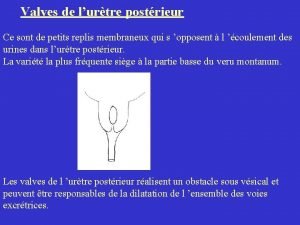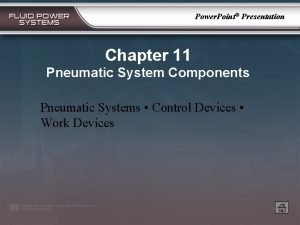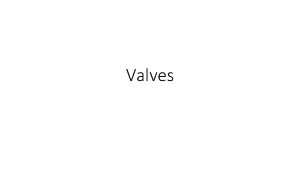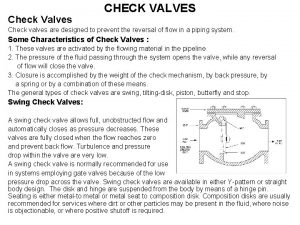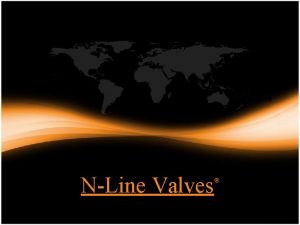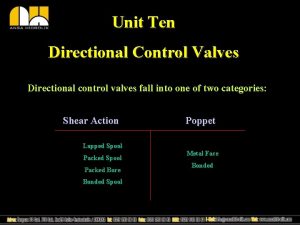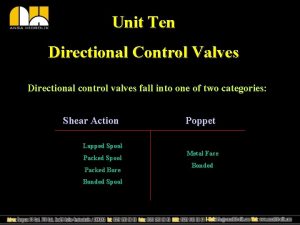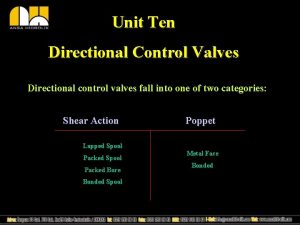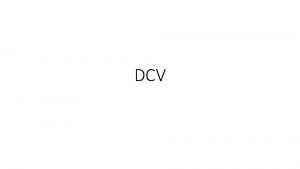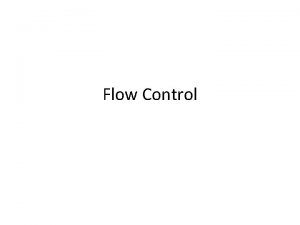Standard Grade Technological Studies Flow control valves Flow













- Slides: 13

Standard Grade Technological Studies Flow control valves

Flow control valves • Normally pneumatic pistons move very quickly. • This can be dangerous. • To slow the speed of a piston down we can use a flow control valve. • There are generally two types available to us.

The Restrictor • Often referred to as a throttle valve. • Works by reducing the amount of space the air can flow through. • Can be adjusted by turning the small screw on top of the valve. • The symbol for a restrictor is shown.

The Restrictor • The restrictor slows the flow of air in both directions. • In the circuit shown, a restrictor is used to slow the speed of the single acting cylinder. • The problem with this type of restrictor is that it slows the piston in both directions.

The Unidirectional Restrictor • This restrictor slows the flow of air in one direction only. • The symbol for a unidirectional restrictor is as follows. . .

The Unidirectional Restrictor • Air flows into port 1. . . • Some of the air takes the bypass route. . . • This blows a small ball against a valve and blocks this path. . . • The air is forced through the restriction, slowing down the airflow. By-pass Air flow Restriction

The Unidirectional Restrictor • Air flows into port 2. . . • Again, some of the air takes the bypass route. . . • The ball is blown away from the valve. . . • The air is flows through the bypass unrestricted. By-pass Air flow

Restrictor circuits • Unidirectional restrictors are more useful to us. • We must ensure that they are inserted into a circuit in the correct orientation. • We always restrict the exhaust air coming from the cylinder. • This makes the piston operate much more smoothly.

Assignment 8 1. Back to the car park barrier. Some one suggests further modifying the circuit. . . • Build and test the circuit shown to raise the barrier slowly • Describe how the system operates. • Why do we restrict the exhaust air when slowing down the speed of the piston?

Assignment 8 2. For safety reasons, the entrance door to a store room must open and close slowly. A double acting cylinder is used to slide the door.

Assignment 8 2. The circuit diagram for the door mechanism is shown, with some of the piping missing. • Copy and complete the circuit diagram. • Build and test the door opening circuit. • Describe how the circuit operates and why two restrictors are needed in this circuit.

Assignment 8 3. Part of a manufacturing process involves dipping components in a chemical solution to prepare them before they are painted. A double acting cylinder controls the process. For safety reasons the cylinder must outstroke and instroke slowly.

Assignment 8 • Design a circuit that will solve this problem. • Using computer simulation, build and test your solution. • Construct your circuit using the pneumatic components. • Describe how your circuit operates to solve the problem. • Why is it important that the cylinder operates slowly in both directions?
 Institute for prospective technological studies
Institute for prospective technological studies Igoole
Igoole Kitchen design
Kitchen design Paradigm shift from women studies to gender studies
Paradigm shift from women studies to gender studies Stock control e flow control
Stock control e flow control Error control and flow control
Error control and flow control Data flow vs control flow
Data flow vs control flow Control flow and data flow computers
Control flow and data flow computers Transaction flow graph
Transaction flow graph Valve de l'urètre postérieur
Valve de l'urètre postérieur Nssl valves
Nssl valves Pneumatics ppt download
Pneumatics ppt download Gosco valves
Gosco valves Fteps
Fteps









